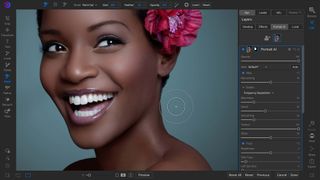Best Photo Editing Software 2021
Software to make your photos look their very best

Whether you’re an amateur shutterbug using a smartphone or a pro wielding a powerful DSLR, the goal is the same: take the best looking photo possible. And while your equipment does a lot of the heavy lifting, photo-editing software can help that photo go from good to great. The only question is, which software should you use?
Photographers with some level of experience will want to find a software that fits their workflow. However, if you’re starting out, it’s a case of what is easy to learn while allowing you to get the most from your images. Last year was an interesting one for photo editing in general with talks of neural filters and sky replacement tools.
Laptop Mag has gone in-depth to find which photo-editing software is best for each type of photographer and their specific pros and cons.
As with most software, there are options for both subscription models and a one-off payment.
To help you make the best choice, we’ve compiled a list of the best photo-editing software.
Here is the best photo-editing software you can buy

1. Adobe Lightroom CC/Classic
Specifications
Reasons to buy
Reasons to avoid
Adobe Lightroom CC/Classic combines a content catalogue as well as the ability to process and edit raw files alongside traditional Adobe Photoshop work. If you focus on enhancement solely, Photoshop is usually not required. Lightroom can become an all-in-one workflow from import to print as it can load print templates as well as customize them with your images.
A key feature is Lightroom’s built-in lens correction system that when activated, uses your image’s exif information against it’s databank of cameras and lenses to correct the image. This is more pronounced when dealing with the pincushion effect and vignetting on some lenses.
While extremely powerful on its own, Adobe has shrunk the number of features available in Lightroom CC to make it more compact and streamlined. The company also branches the traditional Lightroom into Lightroom Classic which is more feature heavy. The big difference between the two is that Lightroom CC stores your photos online. Lightroom Online is also provided to access images on computers that may not have Lightroom installed.
You get access to both in Lightroom’s Photography plan. Experienced photographers will appreciate Lightroom Classic, while beginners may find Lightroom CC to have a smaller learning curve.

2. Adobe Photoshop
Specifications
Reasons to buy
Reasons to avoid
Adobe Photoshop has always been the gold standard in photo editing across the industry and has received many improvements and upgrades over time. The photo-editing software can handle massive projects as well as quick touch-ups. Primarily designed around photo manipulation, this is the perfect tool if you need to move from photography towards photo restoration.
While Photoshop sports a clean, minimal interface, it lacks a beginner mode and it has a steep learning curve. This can be easily supplemented with the many tutorial videos available online. Each tool also has its own tool-tips feature that shows what it does.
Unfortunately, there are no content management tools in Photoshop. However, it is usually included with the Photography plans that do contain Lightroom. As a result, many photographers do use both together to create and manage their archive. Please note that it is no longer available as a single purchase any more.

3. Skylum Luminar
Specifications
Reasons to buy
Reasons to avoid
Skylum is a new contender to the photo-editing software world but it comes packing a punch that has seen a few photographers migrating towards it. This photo-editing software is one of the first to implement AI sky replacement. Combined with a non-destructive editing capability, it is a strong competition against industry staples such as Adobe and Corel.
However, it lacks automatic lens correction functionality. The software suffers from slow development speed as a result of a high CPU and RAM usage instead of relying on a system’s graphics chip.
In spite of this, it has a much lower learning curve compared to legacy tools. This is helped by an Instagram-style filter system, it does also combine this with the ability to use more advanced tools so beginners can work their way up as they improve.

4. DxO Nik Collection 3
Specifications
Reasons to buy
Reasons to avoid
The DxO name will be familiar among photographers who lust over the aesthetic of traditional film photography through their DxO filmpack which is usually combined with a host application. For users without a host application to work with, DxO has bundled a streamlined version of their PhotoLab software.
The Collection shines in its eight core plugins - Analog Efex Pro, Color Efex Pro, Dfine, HDR Efex Pro, Perspective Efex, Silver Efex Pro, Sharpener Pro, and Viveza. Each plugin is designed around specific tasks that photographers usually need.
With the rising cost of analog film, we expect that the Analog Efex Pro will become a key selling point in 2021. Unlike the Filmpack and similar “film simulation” products, Analog Efex Pro does not mention specific film types but focuses on getting the aesthetic that photographers get using film.

5. ON1 Photo RAW 2020
Specifications
Reasons to buy
Reasons to avoid
The ON1 system is known to target the same audience as Adobe Lightroom and the two go head-to-head in terms of features. Two of ON1’s best features are that it has artificial intelligence built directly into it as well as the ability to change the “weather” in your images.
The ON1 ecosystem also comes with a subscription service like Adobe’s which allows synchronization across multiple devices.
One of the more helpful features of ON1 is the AI layer mask system that can be described as an upgraded version of Photoshop’s quick select/magic wand tool.
While ON1 boasts many features, the interface is not as readily customizable as it comes with a standard set of four panels that cannot be changed to show your usual settings. This may not be an issue for new users, but this could potentially affect those who have an established workflow. ON1 is also helpful for those who are new to photo editing as it has animated tooltips that appear over items to explain their function.
The main dealbreaker is the performance specifications that ON1 requires over either of Adobe’s Lightroom options. While ON1 performs better, it is more resource heavy than Lightroom.
Stay in the know with Laptop Mag
Get our in-depth reviews, helpful tips, great deals, and the biggest news stories delivered to your inbox.

Instagram, Facebook, and Messenger are down: Everything you need to know about Meta's outage

Best education apps in 2025

